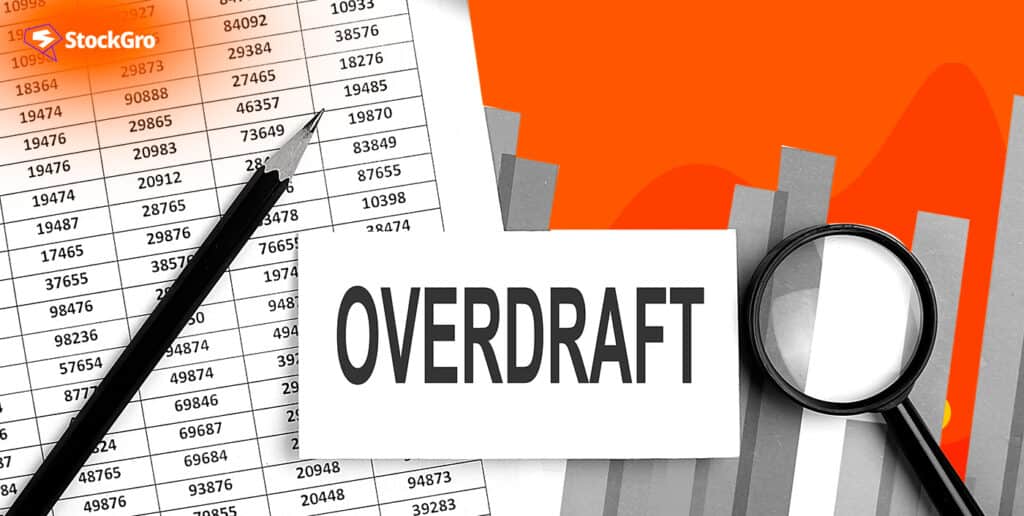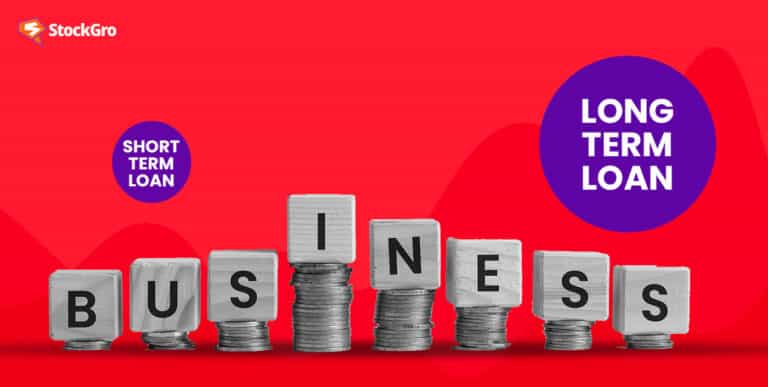
Have you ever faced a situation when you needed some funds urgently, but your bank account did not have enough money? If the answer is yes, then you must learn about the overdraft facility, which is a convenient and flexible way to borrow money from your bank.
The overdraft facility enables you to withdraw money beyond your account’s maximum limit, and you can repay the amount at the pace you prefer. However, the overdraft facility also contains risk factors and costs associated with it, which you must be aware of before opting for it.
Here, we will explain everything you need to know about overdraft facilities, such as how they work, the benefits and drawbacks, and their types.
What is a bank overdraft?
A bank overdraft serves as a useful safety net in addressing short-term cash flow problems. It permits account holders to make withdrawals even when their balance is zero, tapping into an authorised line of credit to cover these temporary shortfalls.
While overdrafts help maintain liquidity to pay bills, and meet other financial obligations during periods where funds are tight, they are not intended as a long-term solution and should only be relied on to bridge gaps of a few days.
For example, let’s say a customer has only ₹10,000 in his bank account, and he wants to make a large purchase of ₹15,000. Now, with the help of an overdraft loan, the customer can withdraw ₹15,000 even when he has only ₹10,000.
Let me clarify how interest is calculated on an overdraft facility to optimise your understanding of cost-effectiveness. If your bank grants you an overdraft limit of ₹40,000 but you only withdraw ₹30,000, then the overdraft interest rate will be charged solely on the amount you utilised (i.e., ₹30,000) rather than the entire credit limit.
Also read: Exploring financial literacy education
Features of overdraft facility
An overdraft loan facility provides flexibility to make transactions even when there are insufficient funds in the bank account. Let’s see some of its main features:
- This facility can be availed on both current and savings accounts.
- The bank or financial institution establishes the repayment period and maintains authority over the overdraft account.
- The overdraft interest rate is decided on factors such as an individual’s credit score, payment history, and account value.
- If two or more individuals jointly apply for an overdraft loan, they become co-borrowers and share equal responsibility for repayment.
- Rather than requiring customers to repay their overdraft amount through equated monthly instalments, or EMIs, the bank allows them the flexibility to pay it off incrementally over time.
- The interest is calculated solely on the portion of the overdraft limit that is used. It is not charged on the full available amount.
Types of overdraft
A customer can avail of the overdraft facility in various ways; let’s see
1. Overdraft against property
An overdraft facility against your property provides a useful option when you need funds beyond your usual credit limit. By using your property as collateral, the bank feels more secure extending a higher line of credit to meet short-term cash flow needs.
2. Overdraft against insurance policy
You can use your insurance policies as security for an overdraft facility. The amount that can be borrowed typically relies on the cash value or surrender value that can be derived from terminating the policy.
3. Overdraft against salary
Customers can also opt for an overdraft facility against their salary. Here, overdraft facilities are tied to the monthly income. Generally speaking, an overdraft limit is set as a multiplier of one’s salary, providing a flexible buffer for short-term cash flow needs.
4. Overdraft against stocks and mutual funds
Investing in mutual funds and stocks can also help provide security for an overdraft facility, with the credit limit determined based on the current value of your investments. This allows the account holder greater flexibility to manage short-term cash flow needs while still benefitting from the potential growth of their investment portfolio over time.
5. Overdraft against fixed deposits
Apart from these, you can also take advantage of overdraft facilities against your time deposits, i.e., fixed deposits. However, remember that not all banks and financial institutions provide overdrafts against fixed deposits.
Also read: Debt management: Advanced strategies for paying off debt quickly
Pros and cons of overdraft facility
Let us see some pros and cons of overdraft facilities.
Pros
- An overdraft can assist you in times of urgent financial needs. When unexpected expenses arise, and your funds fall short, an overdraft allows temporary access to extra money that can address immediate cash flow gaps.
- Banks and other financial institutions do not typically require collateral for an overdraft loan, which is another advantage.
- When your bank account balance dips below zero, the bank will only charge you interest on the amount that is overdrawn. Rather than charging interest on your entire overdraft loan amount.
- Further, you need fewer forms and documents to avail of an overdraft facility compared to other types of accounts, making it easy to obtain.
Cons
- Overdraft interest rates tend to be higher compared to more traditional types of loans.
- There are a few factors that determine the overdraft limit set by different banking institutions. The limit can fluctuate significantly based on the specific bank.
- To be eligible for an overdraft facility, an individual must first have a bank account.
- The overdraft interest rate fluctuates frequently and is subject to change without notice.
- Taking out an overdraft is typically not advisable for financing needs that extend beyond a short period.
Must read: Unlocking prosperity: The transformative power of financial literacy
Bottomline
In conclusion, an overdraft facility is a convenient and flexible way to borrow money from your bank when you face a temporary cash crunch.
However, it comes with risks and costs, such as high-interest rates, fees, and penalties. Therefore, you must use it wisely and only for short-term needs. Further, you must compare the different types of overdraft facilities available and choose the one that suits your situation and budget.

